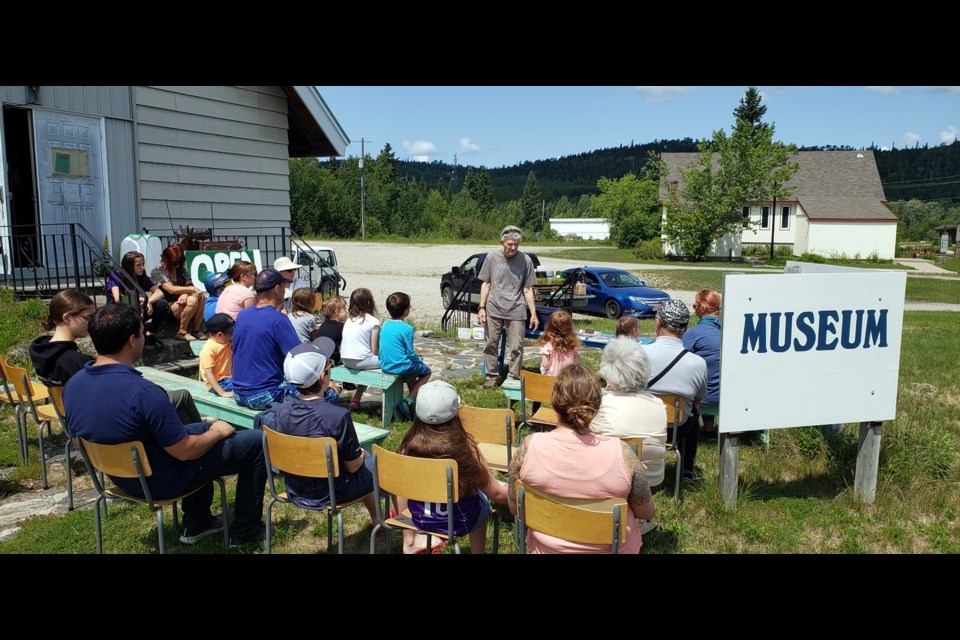The Manitouwadge Museum opened its doors for the 2023 season with a presentation on monarch butterflies.
Manitouwadge Archival and Historical Society president John Lavoie, a monarch butterfly enthusiast, encourages the planting of milkweed to attract and support the struggling population of the beautiful insects.
In his presentation at the museum, he described the lifecycle stages of the Monarchs; the tiny eggs are laid exclusively on the milkweed plant, where they grow and eventually hatch. The bright yellow and black caterpillars that emerge feed on the milkweed for two to four weeks, then find a place to attach themselves to a stem or leaf so they can start the process of metamorphosis. Within a couple of weeks, the monarchs begin to unfurl their wings and prepare for the next step in their migratory journey — a 4,000-kilometre journey back to Mexico to overwinter, where they will start the migration cycle all over again.
“The caterpillars are smaller than usual in Manitouwadge this year,” he says. “It could be because of the cooler night temperatures we’ve been experiencing.” He points out the eggs are disappearing, too, most likely due to being eaten by earwigs, ants, and certain wasps, as well as being destroyed by the wind.
The Monarch butterfly population has been dwindling since the 1990s, due to changes in the weather, the destruction of their habitat, and other factors. A three-country agreement is now in place to help restore their numbers, and the butterflies are being monitored through a tagging campaign by Monarch Watch, an organization dedicated to their conservation. When summer begins to draw to a close, newly emerged butterflies are tagged with small, lightweight stickers. Each sticker bears a distinct number through which important information about the monarch’s migration can be collected and analyzed.
After the lecture, Lavoie showed the audience samples of the two different types of milkweed and how to plant them.
“Common milkweed,” he explained, “spreads out its roots and multiplies in the garden. The larger swamp milkweed may grow into a few tall stems, but is generally less invasive. Both will attract the Monarchs; where you grow it in your yard is a matter of preference.”
He gave out seeds and potted common milkweed plants to everyone, with hopes that the monarchs will continue to find safe havens and feeding grounds in Northern Ontario.
You can obtain your own milkweed seeds and monitor the progress of the monarch chrysalises growing at the Manitouwadge Museum at 52 Adjala Avenue, which opened its doors earlier this week. There you’ll find a collection of relics dating back to the mid-1950s when the town was first being settled. The museum, which first opened in the Hallmark Square strip mall in 2002, moved to its present location at the former Anglican church, donated by the Diocese of Algoma, in 2006. It is operated by the Manitouwadge Archival and Historical Society, and is funded solely through private donations.
This year there are two tourist and information guides on-site to help you discover the town’s history. Verité Fairbrother has returned for her third year in a row, and Aspen Law starts her first year as an attendant through the summer student program. The museum is open from 11:00 a.m. to 6:00 p.m. daily. Special tours can be arranged by contacting John Lavoie at (807) 826-3549 or [email protected].



